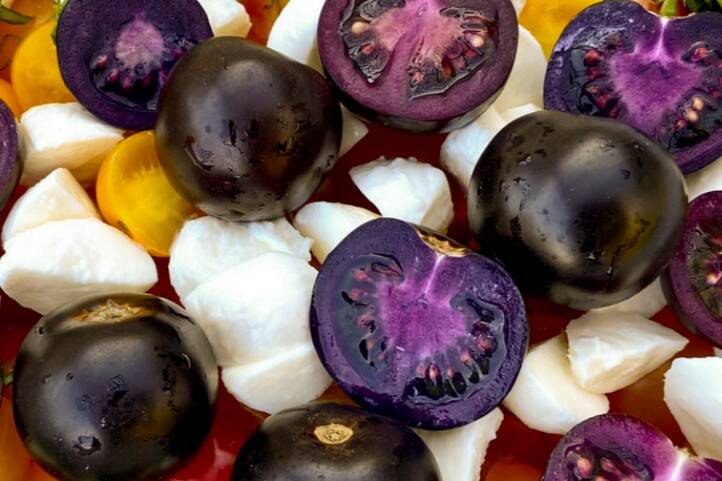There’s been giddy excitement in the oilseed sector about the growth potential of the burgeoning biofuels market.
The U.S. soy sector anticipated the need for an additional 600 million bushels of annual crush capacity, and for production of the crop to grow by five to seven million acres to meet the new demand.
North of the border, Canadians were just as excited. Just two years ago Chris Vervaet, executive director of the Canadian Oilseed Processors Association, was beating the drum of growing opportunities at the annual Fields on Wheels conference at the University of Manitoba.
Read Also

Introducing the purple tomato
Health Canada has approved bioengineered The Purple Tomato (TM), maybe leading to new culinary uses and health benefits?
“I can’t say this enough … we need more canola to be grown in this country,” he told attendees.
A year ago, the drumbeat continued. Curtis Rempel, vice-president of crop production and innovation for the Canola Council of Canada, spoke at food technology and research day hosted by the Richardson Centre for Food Technology and Research.
“Biofuels seem to be taking the front-and-centre space for the oilseed sector, at least in Western Canada,” he said at the time.
Canola crushing has also been growing in recent years, with about five million tonnes of new capacity planned or under construction.
But these high hopes have hit a deep puddle on the road — a puddle filled with used cooking oil, mostly coming from China. As Glacier FarmMedia’s Sean Pratt wrote recently, the U.S. is facing a “tsunami” of product, totalling 3.2 billion pounds in the first eight months of 2024, or double the amount in the same period a year earlier.
To put it into perspective, as Pratt reports, it’s enough to produce 600 million gallons of biofuel, whereas the U.S. EPA forecast there would be enough to make about 50 million gallons. All the canola imported to the U.S. from Canada for biofuel production in 2023 was enough to make 240 million gallons of the fuel.
This wasn’t entirely unexpected. A 2022 report on biofuels by the International Energy Agency fretted over a looming “feedstocks crunch” but noted what it called “waste and residual oils” would be part of the market.
“Wastes and residues are expected to be used for 13 per cent of biofuel production in 2027, up from nine per cent in 2021,” the report read.
But the sheer amount that has flowed into the U.S. is stunning. And apparently, it has stunned industry insiders. It has upended some plans to increase the domestic soy crush capacity, and put a lid on oilseed prices by filling demand.
As Pratt wrote, Dan Basse, president of AgResource Company, said imported used cooking oil from China and tallow from Brazil are displacing soybean oil in the U.S. biofuel sector. It’s about 7.9 billion pounds of the two products, or the equivalent of the soybean oil that would be produced by crushing 650 million bushels of soybeans.
“Those two have kind of overwhelmed the soybean oil demand story,” Basse said.
Current oilseed prices certainly reflect these challenges. Soybeans have trended steadily downward from their 2022 highs, at times trading at half of their peak value, and canola has followed.
This sparked suspicion in the U.S. that there’s skullduggery afoot. In a letter to Biden administration officials, several U.S. senators noted there’s credible evidence that used cooking oil is being augmented by palm oil before it’s sent to the U.S.
In response to these concerns, a bipartisan bill has been introduced that could limit U.S. biofuel tax credits to only domestically produced feedstocks.
That would be terrible news for the Canadian canola sector. It would be penalized for its above-board business practices in a bid to tamp below-board practices elsewhere.
This is an issue our federal government needs to address, and the various affected trade associations are no doubt already advocating for that. Canada may be the boy scout of global trade but it shouldn’t allow itself to become a patsy.
















